What kind of dialog is paper creating with us? a study of paper and technology.
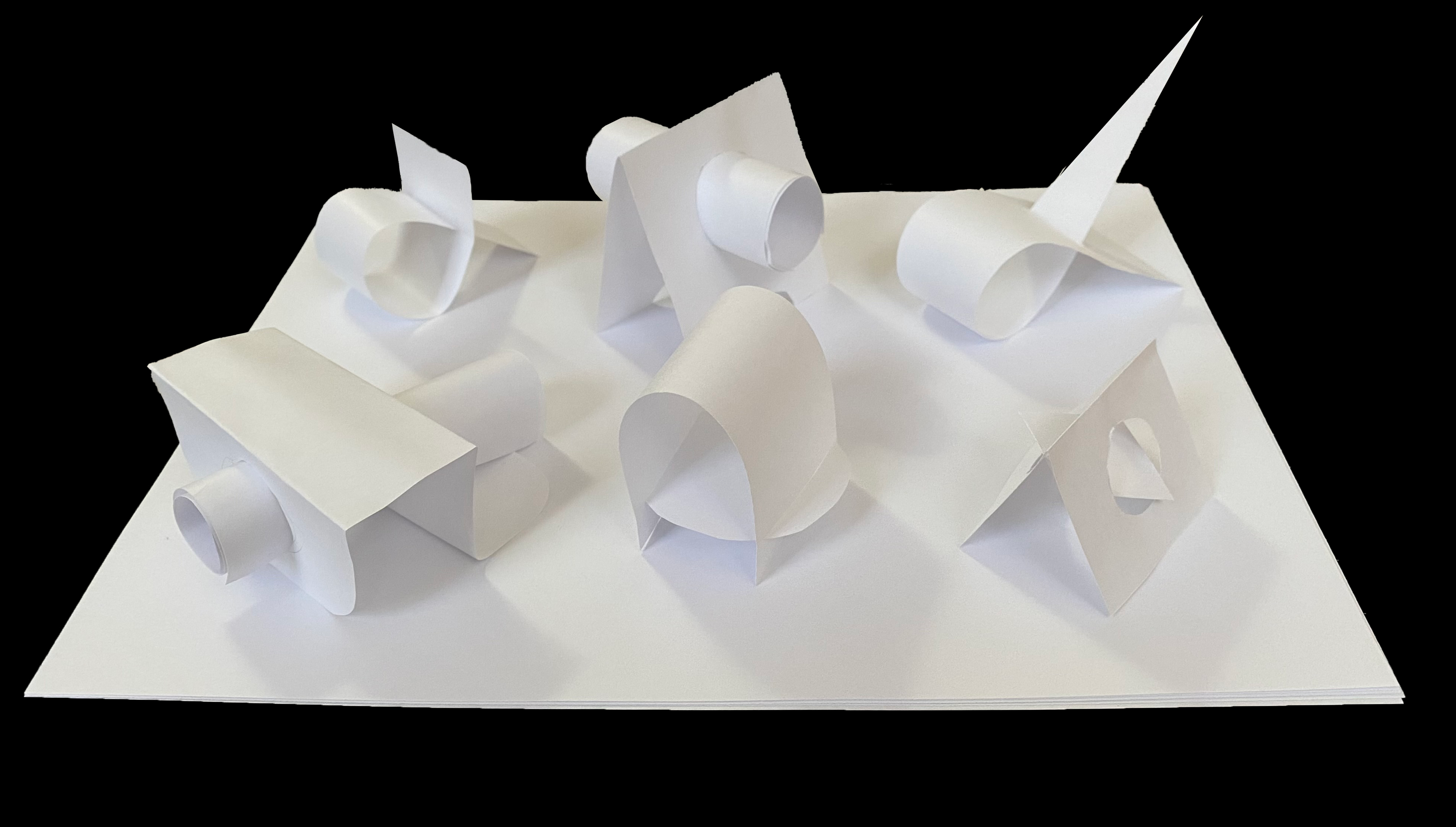

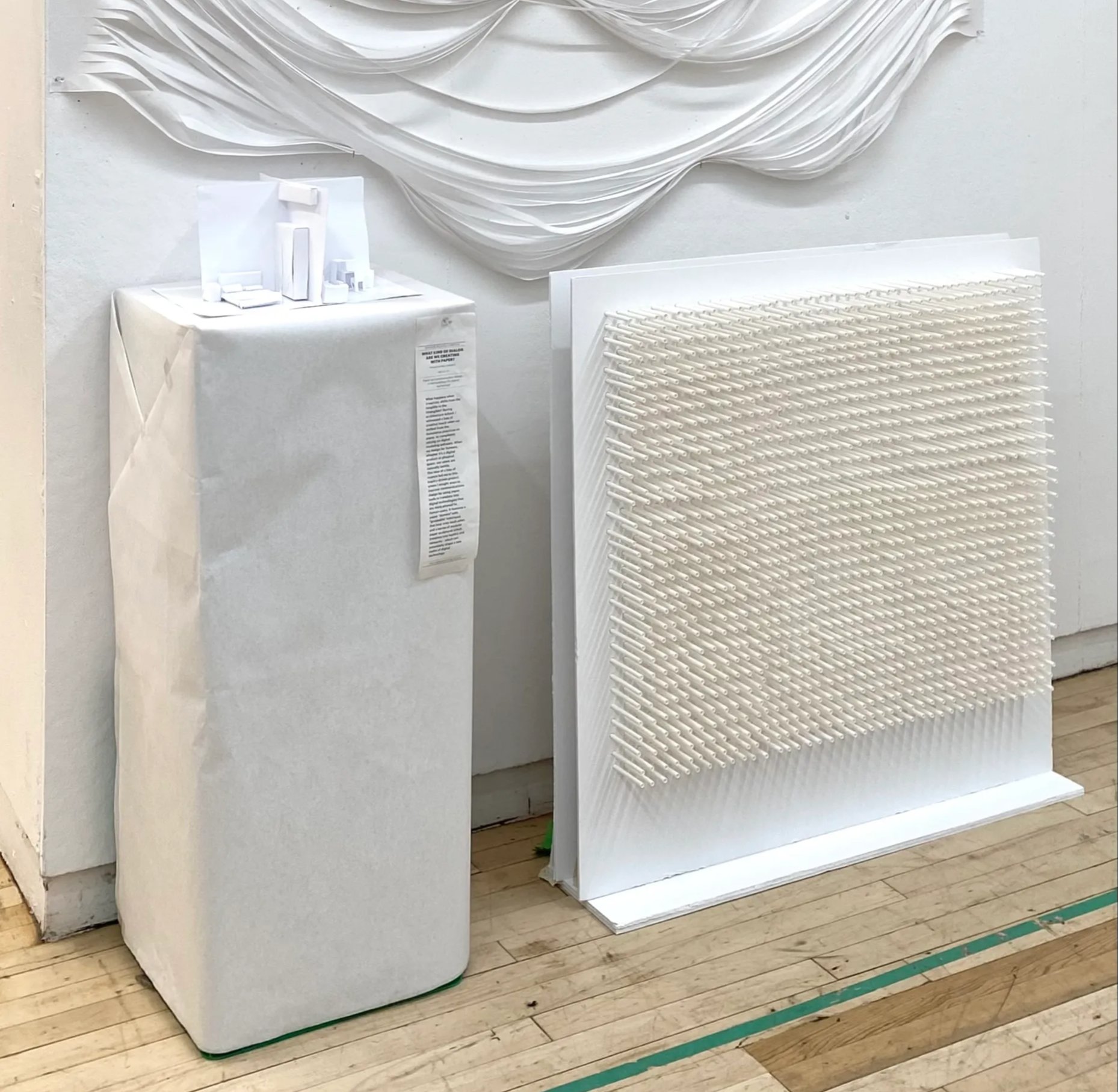
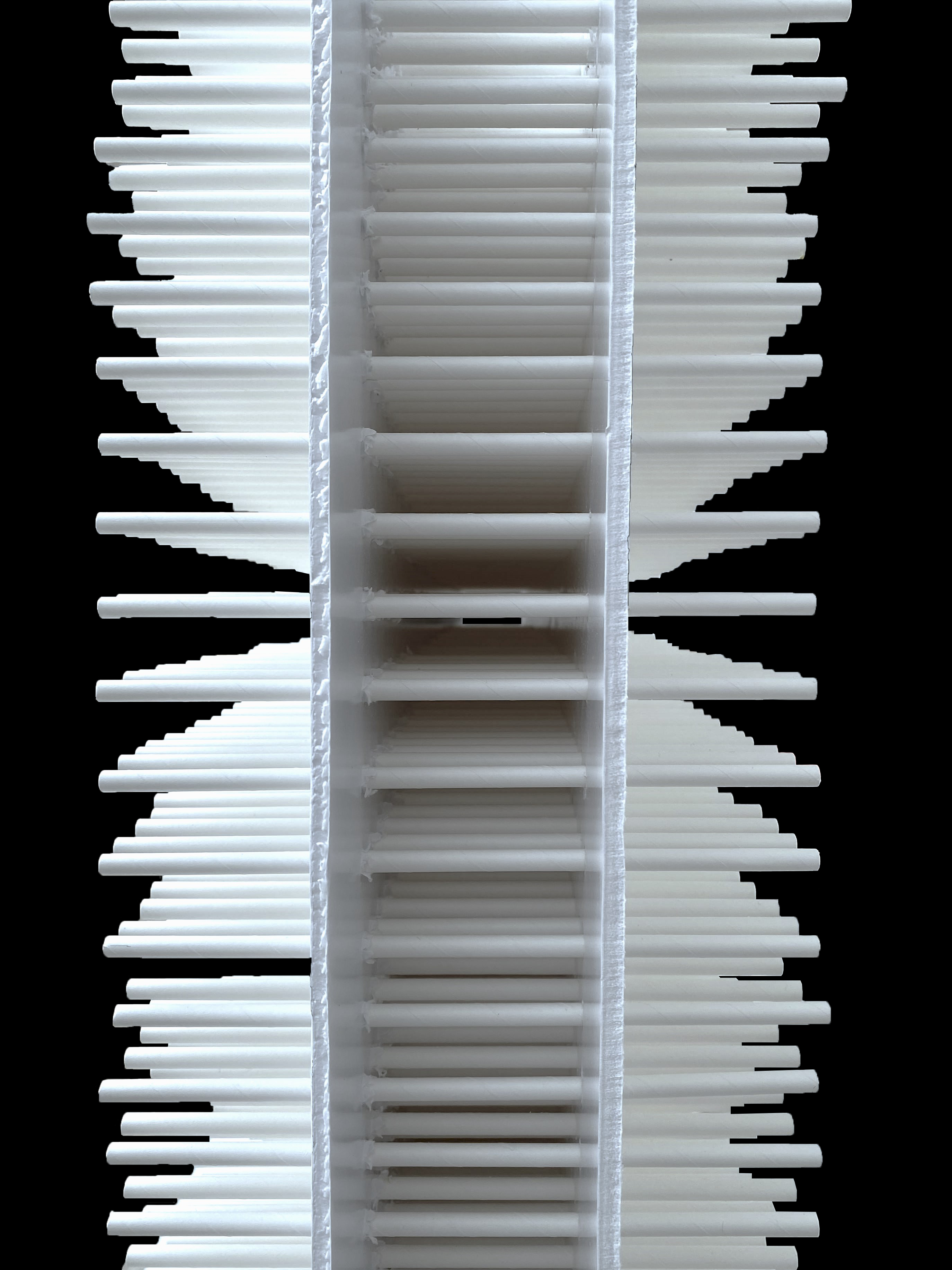
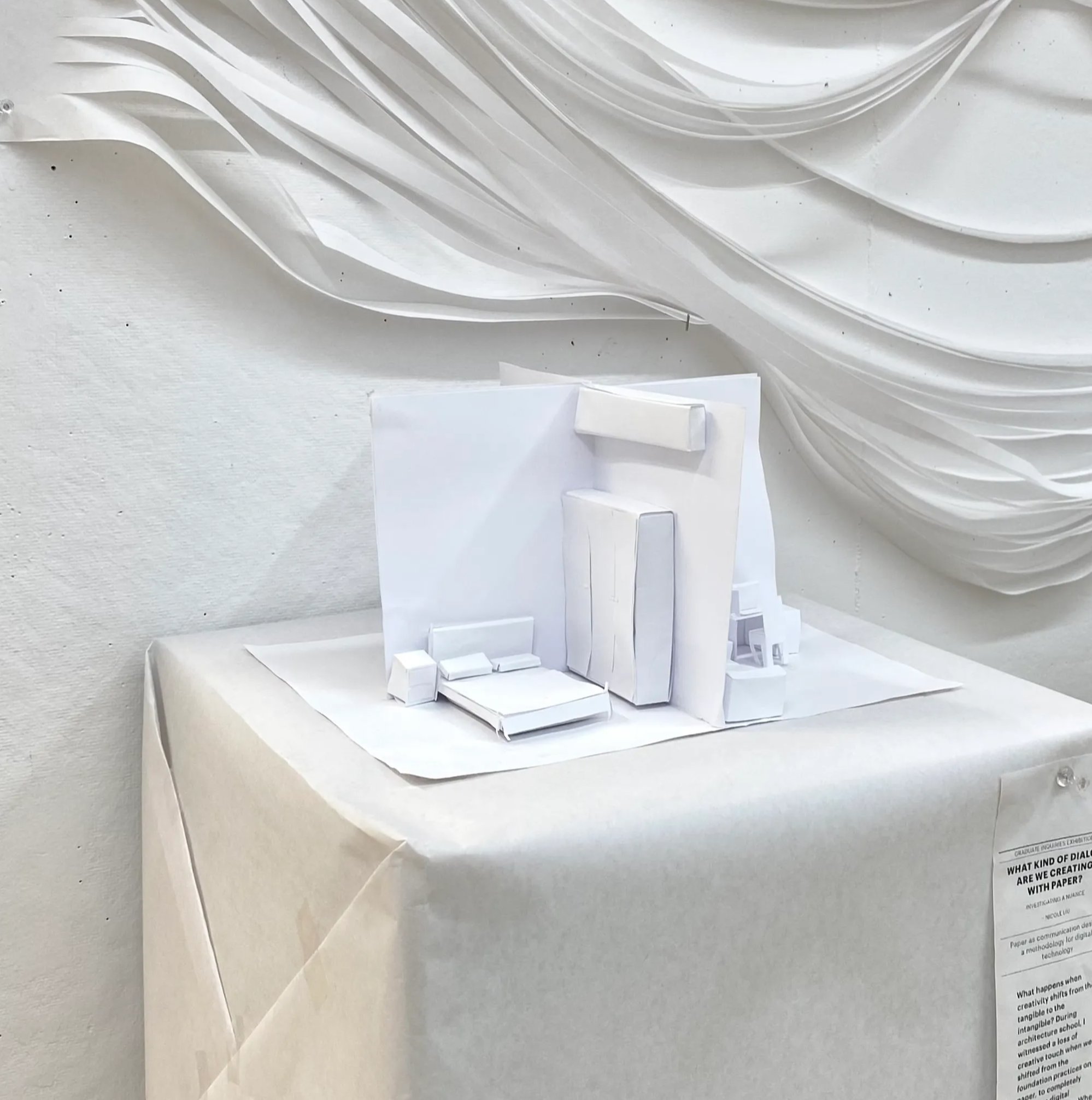
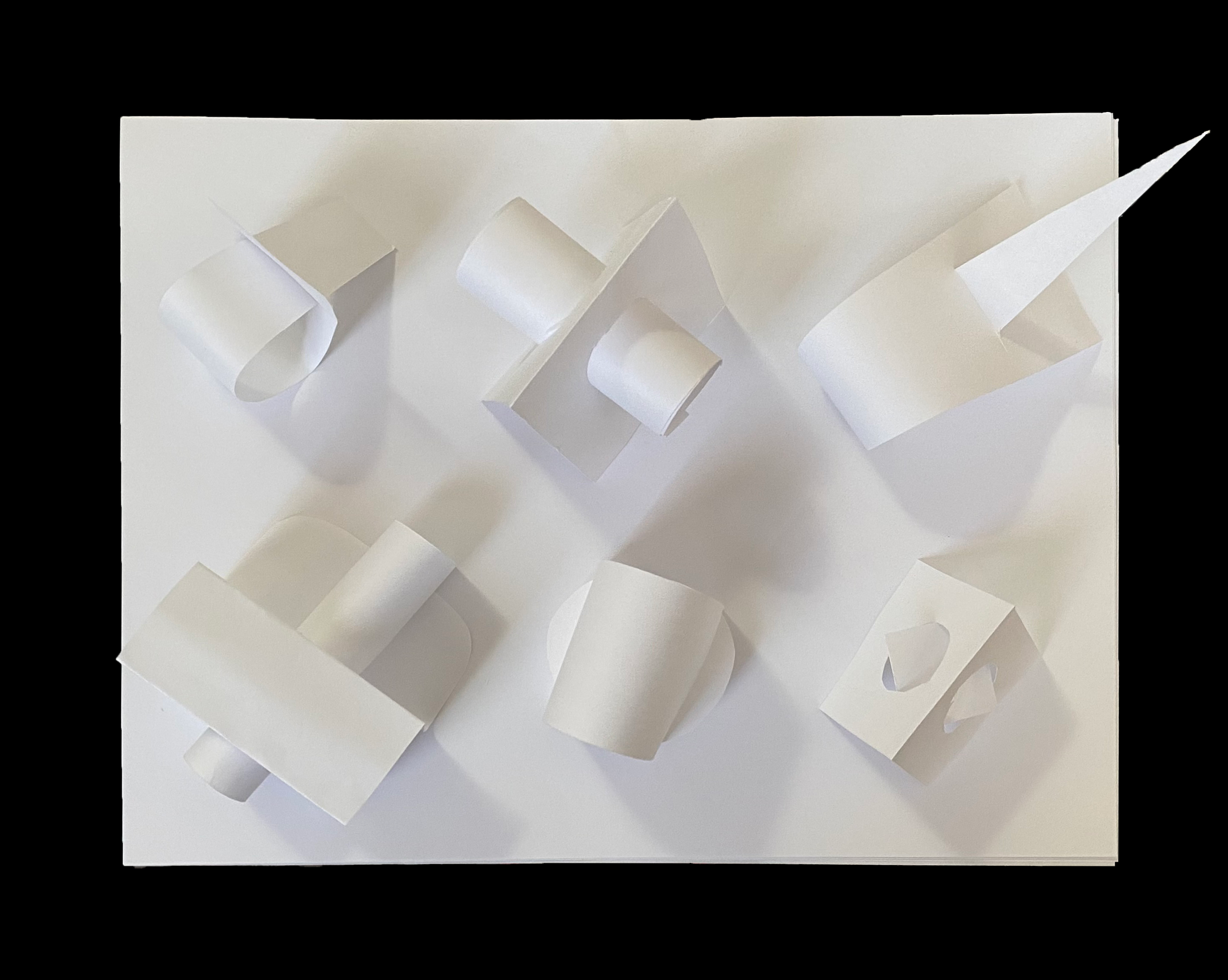
By Nicole Liu
"What happens when creativity shifts from the tangible to the intangible? Back in architecture school, I witnessed a loss of creative touch when we shifted from the foundation practices on paper, to completely relying on digital modeling software. When we design for humans, whether it's a digital product or physical space, our users are naturally tactile.
The idea of a loss of nuance led me to this inquiry-driven project, where I sought ways to improve communications design by using paper tools to translate into digital technologies that are more attuned to human users. This installation features a paper ""domain"" with ""graspable"" interfaces that loop onto each other, above a sculpture I named ""paper impressions"", made with 1276 paper straws, which translate into haptics and networks - which can potentially shape a new realm of digital technology."